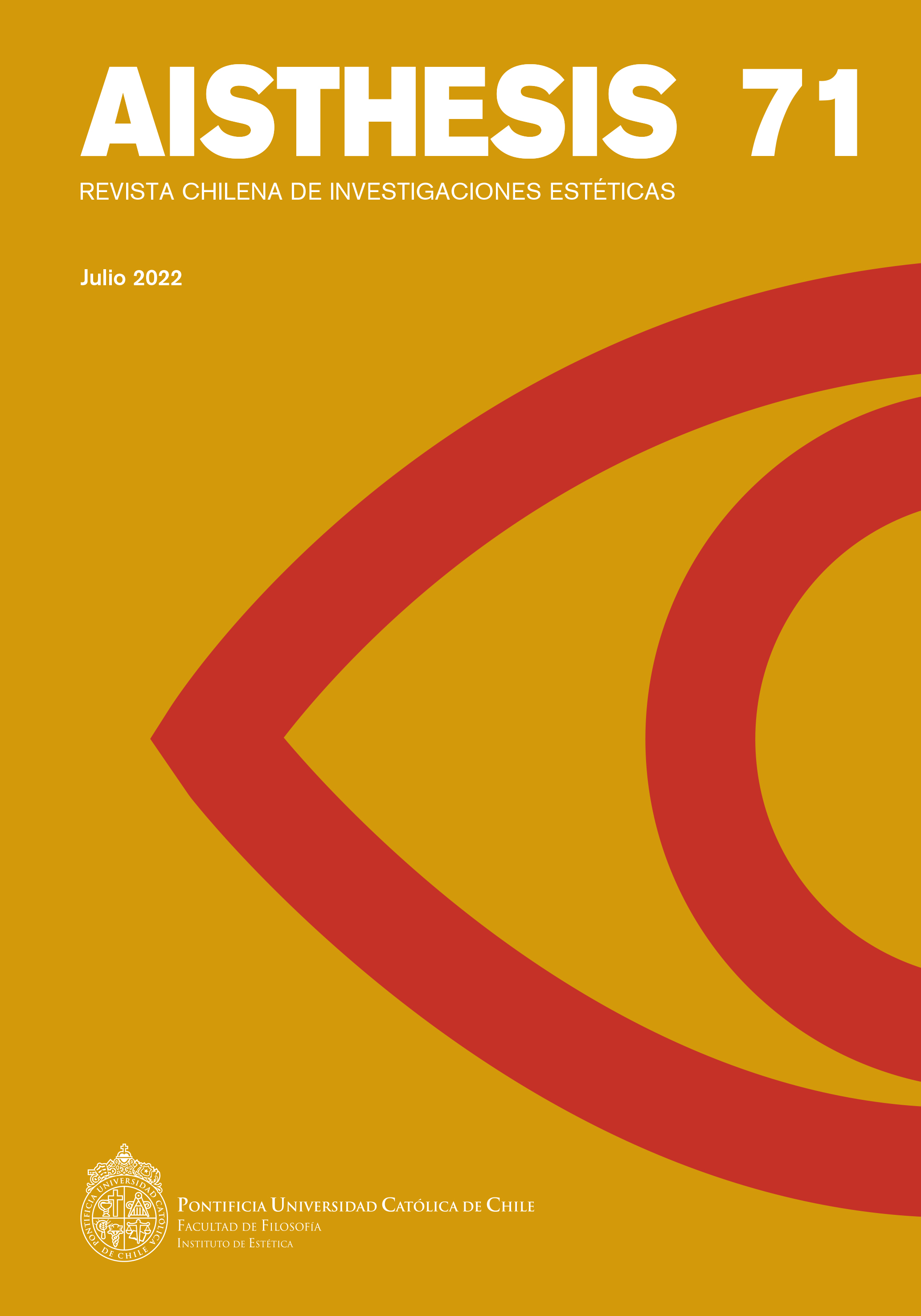The “rupture” as postmodernity: the critical thought of Octavio Paz from1950 to 1967
Main Article Content
Abstract
This paper aims to point out some of the fundamental categories of Octavio Paz's art criticism between 1950 and 1967 such as significance, appearance and poetry, to show that the notion of "rupture", which the poet described in 1950 and his retake in the sixties make a profound questioning of Mexican modernity, suggesting a theory of postmodernity and the local neo-avantgarde. In addition to the text called Tamayo in Mexican painting (1950), reference will be made to four other essays: From criticism to the offering (1960); Presentation of Pedro Coronel (1961); The price and significance (1963); Presence and present: Baudelaire art critic (1967). From my perspective, it is in these five essays that a program and conceptualization of his criticism can be found, based on readings he makes of Kant, Heidegger and structuralism among others, whose influence is evident but never cited. Furthermore, it will be noted that Paz's art criticism is constitutive of his general thought and not just a mere contingency of his work.
Downloads
Article Details

This work is licensed under a Creative Commons Attribution-NonCommercial-ShareAlike 4.0 International License.
All contents of this electronic edition are distributed under the Creative Commons license of "Attribución-shareAlike 4.0 Internacional" (CC-BY-SA). Any total or partial reproduction of the material must mention its origin.
The rights of academic works published in this publication belong to their authors., who grant to AISTHESIS: Revista Chilena de Investigaciones Estéticas the license for its use. The management of the permits and the authorization of the publication of the images (or of any material) that contains copyright and its consequent rights of reproduction in this publication is the sole responsibility of the authors of the articles
References
Arredondo Lambertz, Sofía. “La autonomía del arte en Octavio Paz”. Tesis para optar al grado de Doctor en Filosofía, Universidad de Barcelona, 2017.
Fernández, Tomás y Elena Tamaro. “Biografía de Octavio Paz”. Biografías y vidas. La enciclopedia biográfica en línea. Barcelona, España, 2004. Disponible en https://www.biografiasyvidas.com/biografia/p/paz_octavio.htm
Fuente David. La disputa de “la ruptura” con el muralismo (1950-1970): luchas de clase en la rearticulación del campo artístico mexicano. Ciudad de México, Instituto Mora, 2018.
Guadarrama, Guillermina. El frente nacional de artes plásticas (1952-1962). México, INBA, 2005.
Heidegger, Martin. “El origen de la obra de arte. 1935-1936”. Caminos de bosque. Trad. Helena Cortés y Arturo Leyte. Madrid, Alianza, 1996, pp. 11-59.
Iber, Patrick. Neither Peace nor Freedom. Cambridge, Harvard University Press, 2015.
Kant, Immanuel. Crítica del juicio seguida de las observaciones sobre el asentimiento de lo bello y lo sublime. Trad. Manuel García Morente. España, Técnos, 2007.
Medina, Cuauhtémoc. “La oscilación entre el mito y la crítica. Octavio Paz entre Duchamp y Tamayo”. Materia y sentido. El arte mexicano en la mirada de Octavio Paz. México, Landucci, MUNAL e INBA, 2009, pp. 275-304.
Miranda, Raúl. “En la casa de la mirada: La crítica de arte de Octavio Paz”. Tesis para optar al grado de Doctor en Letras, The City University of New York, 2003.
Paz, Octavio. “Tamayo en la pintura mexicana”. Tamayo. México D. F., UNAM, 1959, pp. 9-21.
––. El laberinto de la soledad, México, Fondo de Cultura Económica, 1993.
––. “De la crítica a la ofrenda”. Los privilegios de la vista II. Arte de México, Ed. Octavio Paz. Ciudad de México, Fondo de Cultura Económica, 2006, pp. 265-271.
––. “El precio y la significación”. Los privilegios de la vista II. Arte de México, Ed. Octavio Paz. Ciudad de México, Fondo de Cultura Económica, 2006, pp. 321-337.
––. “Pinturas de Rodolfo Nieto”. Los privilegios de la vista II. Arte de México, Ed. Octavio Paz. Ciudad de México, Fondo de Cultura Económica, 2006, pp. 382-386.
––. “Presencia y presente: Baudelaire crítico de arte”. Los privilegios de la vista I. Arte moderno universal, Ed. Octavio Paz. Ciudad de México, Fondo de Cultura Económica, 2006, pp. 43-55.
––. “Presentación de Pedro Coronel”. Los privilegios de la vista II. Arte de México, Ed. Octavio Paz. Ciudad de México, Fondo de Cultura Económica, 2006, pp. 359-363.
--. Puertas al campo, México, Universidad Nacional Autónoma de México, 1966.
